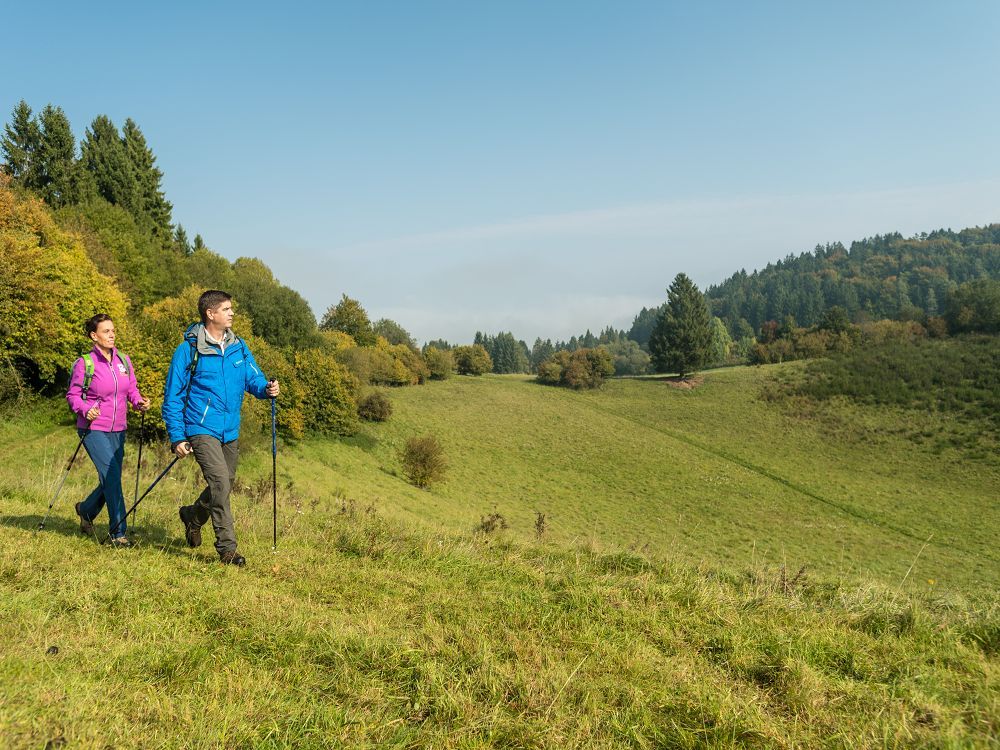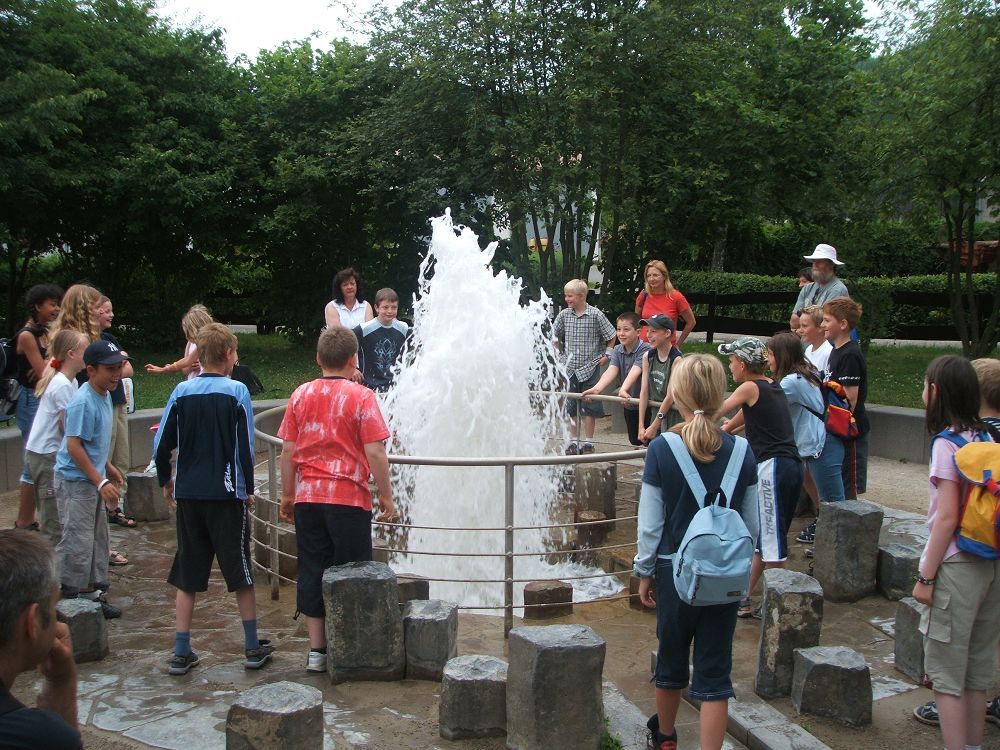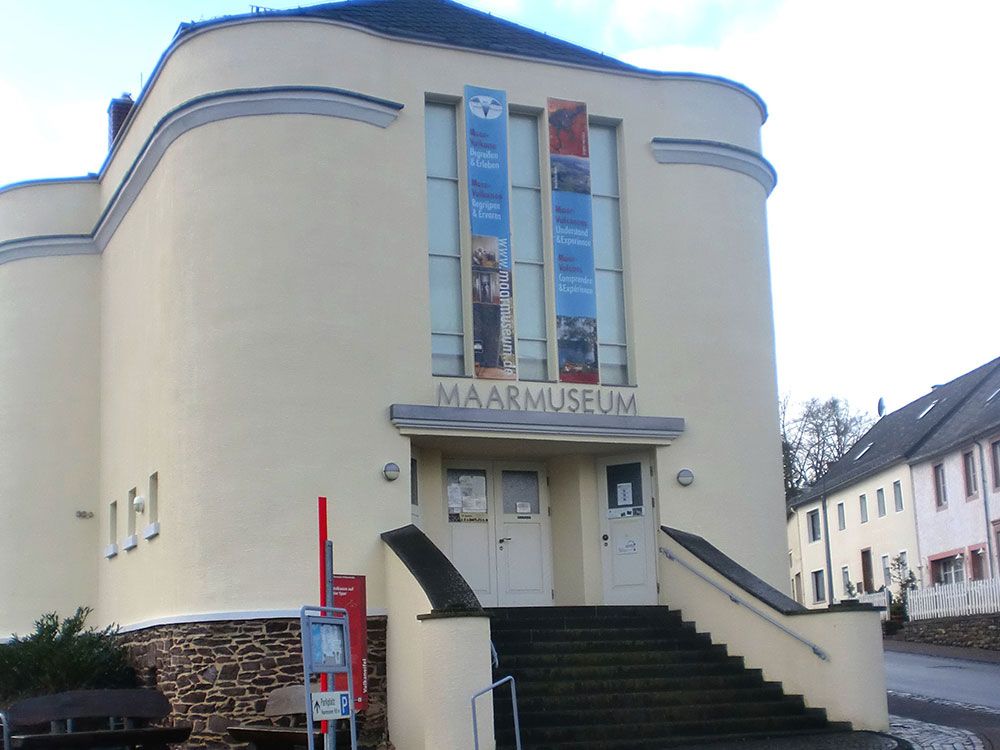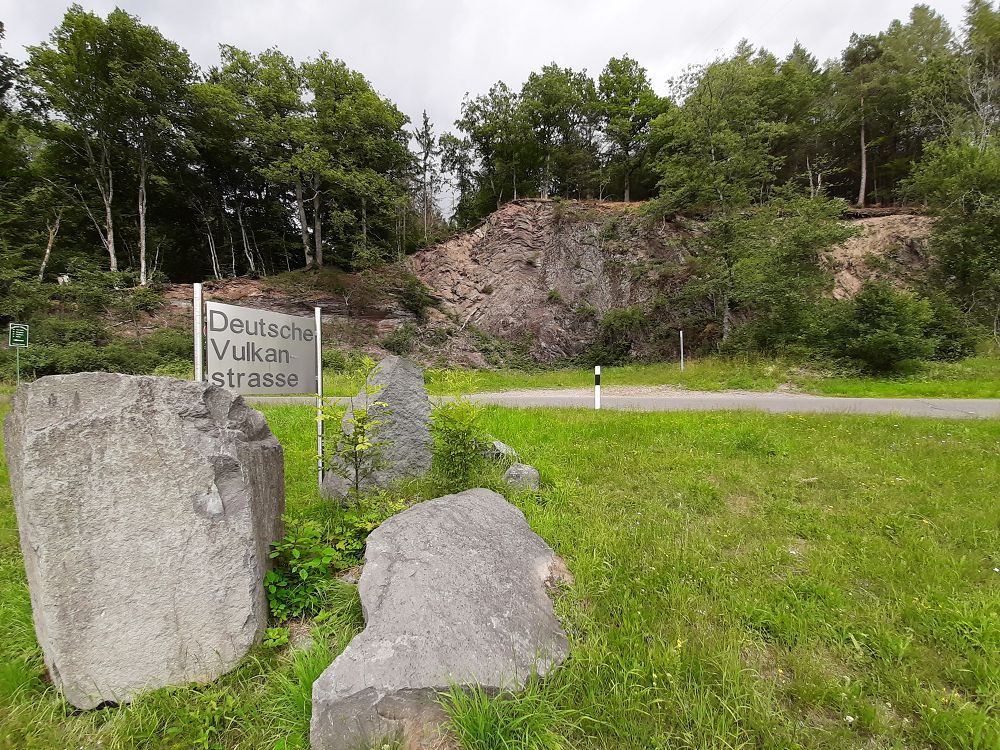11. Trasshöhlen (Trass Caves)
11. Trasshöhlen (Trass Caves)
The sky turned dark in the Brohltal (Brohl Valley), when the Laacher See (Lake Laach) Volcano erupted only five kilometres away. A very hot mixture of lava particles and gases shot up into the atmosphere at intervals. Every time the eruption column subsided, volcanic material raced down the surrounding valleys as if on a cushion of air. Volcanic ash and lava particles filled the valleys up to a depth of 60 metres. In the course of time, the loose materials of the current of hot gases and rock fragments bonded and hardened to form a rock which in this region is known as 'trass'.
Already the Romans extracted trass in the Brohltal. They used it as building material for houses and other things. When it is finely ground and mixed with lime and water, it forms a mortar which hardens even under water. So it is no surprise that it was the Dutch who drove forward extraction of the mineral from the 16th century onwards: Trass is ideal for building dams and harbour installations.
It was the Dutch too, who gave the volcanic cement its name: 'Tyrass' is Dutch and means 'glue'. The trass cliffs which you can see from here were hollowed out by quarrying. But they are now open to visitors.
Because of their poor quality, they were no longer of interest for extraction. Today they are an impressive testimony to the huge current of hot gases and rock fragments, which once filled the whole valley.
 English (UK)
English (UK)  Deutsch
Deutsch 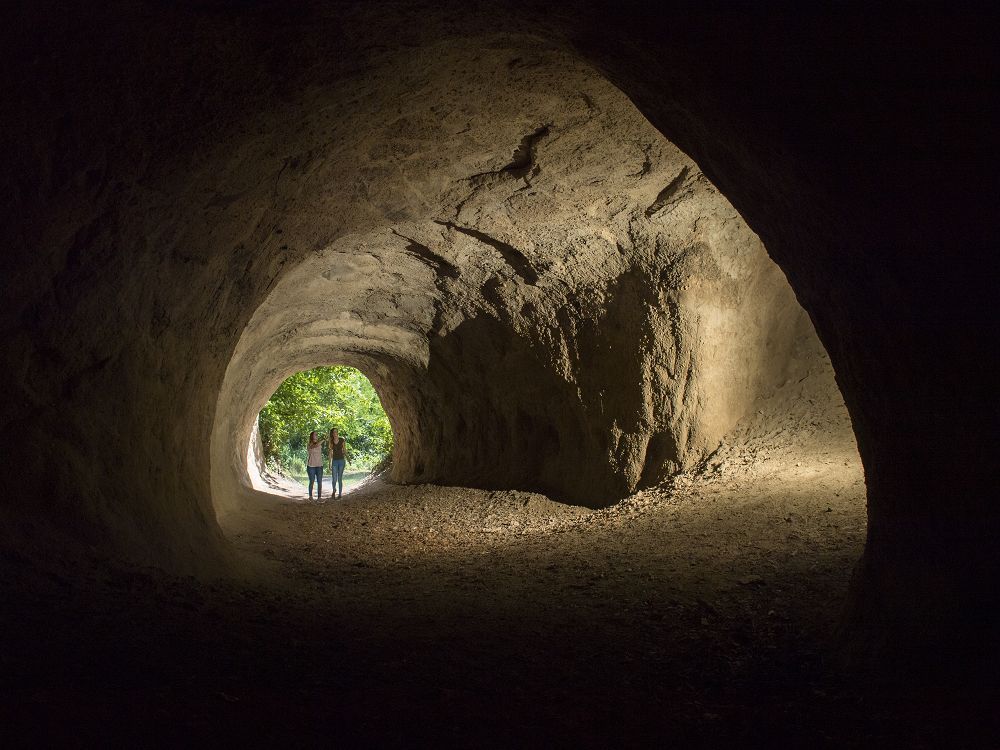
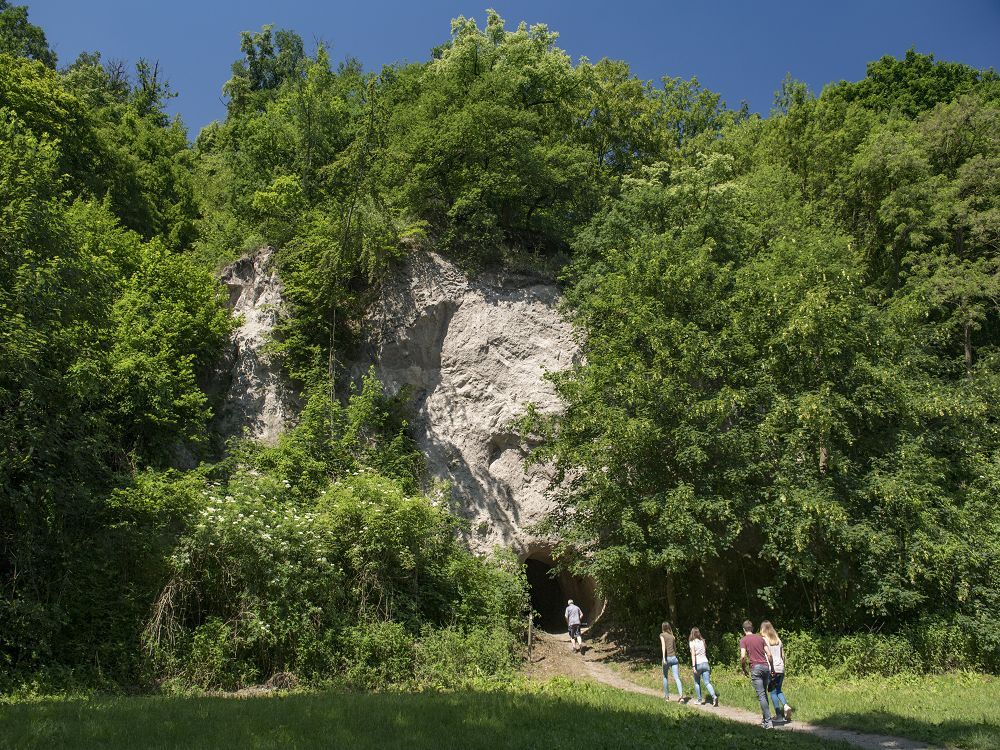


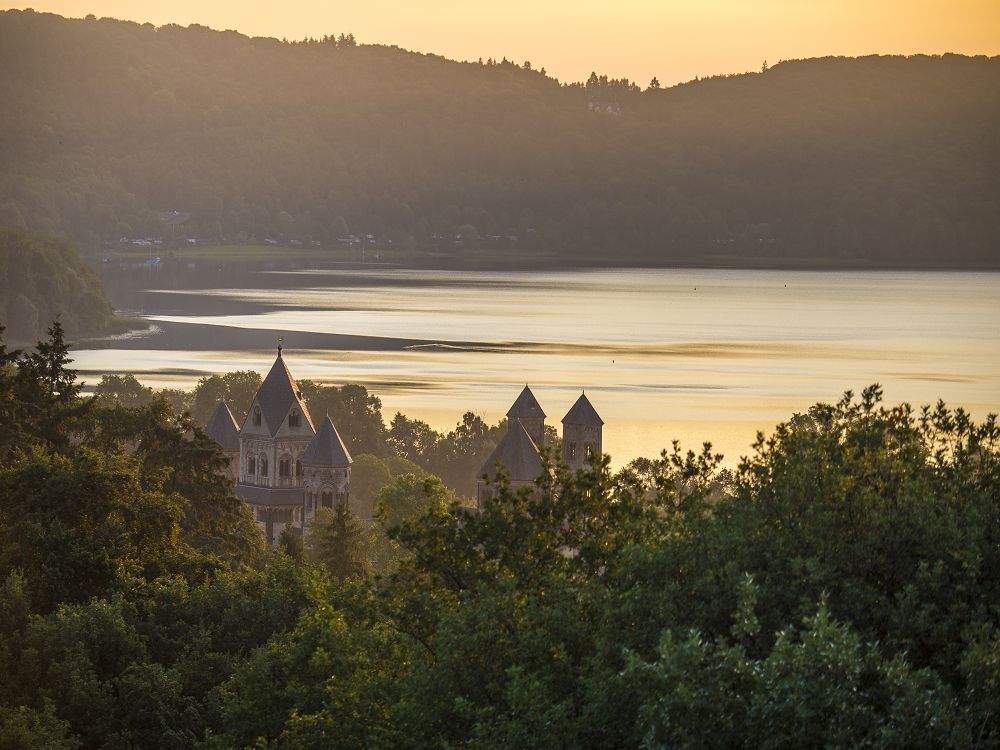
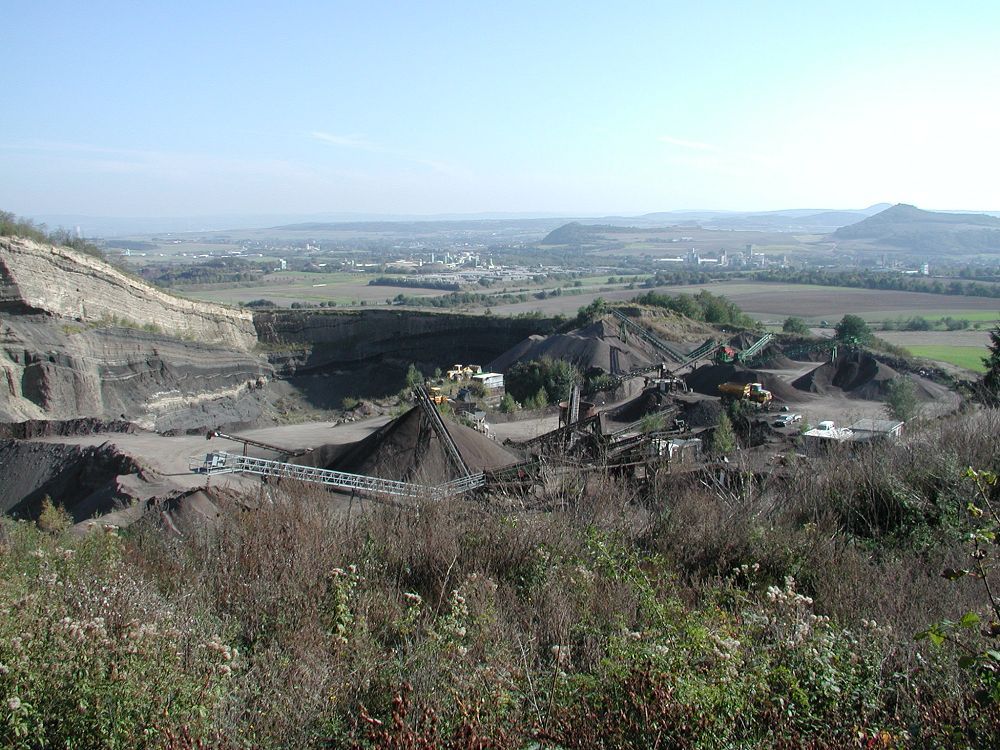

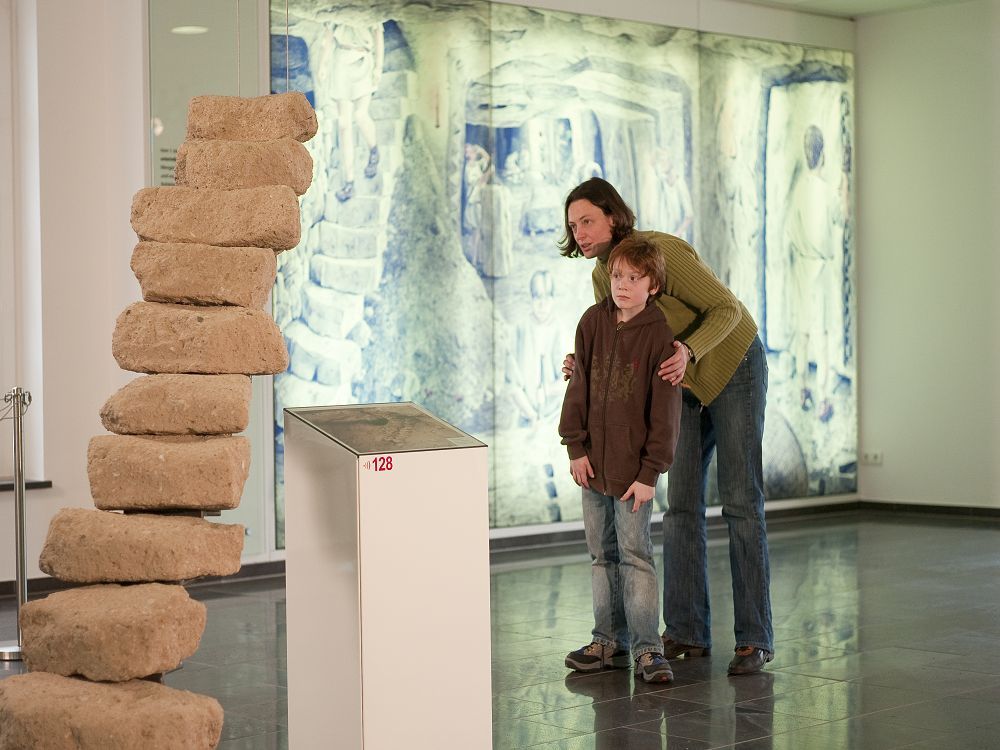


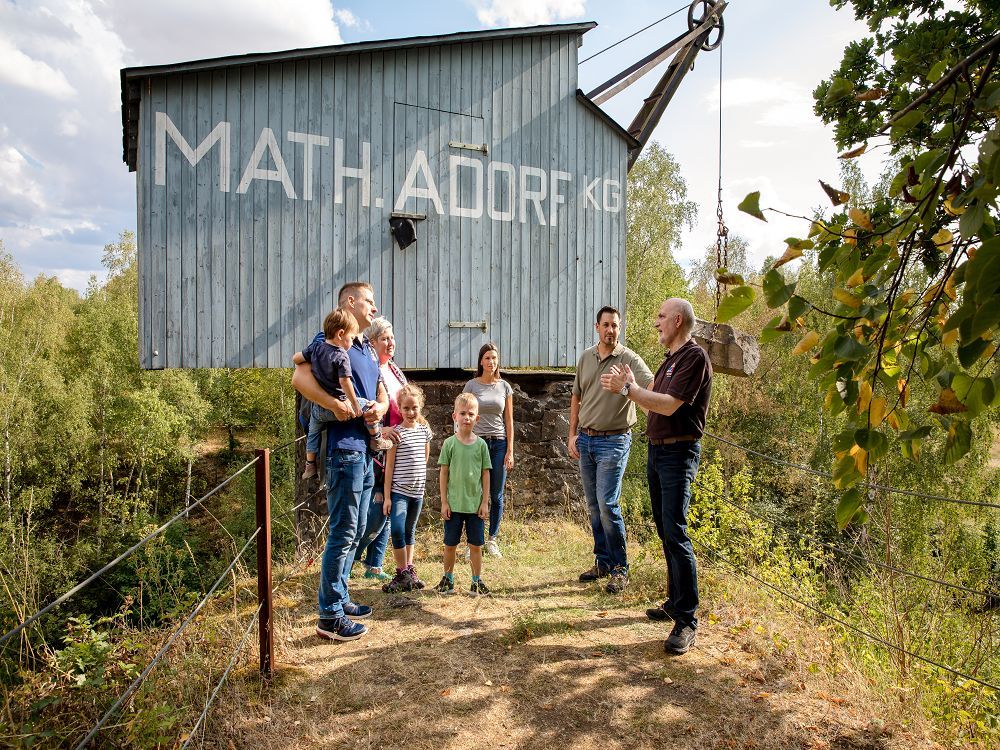
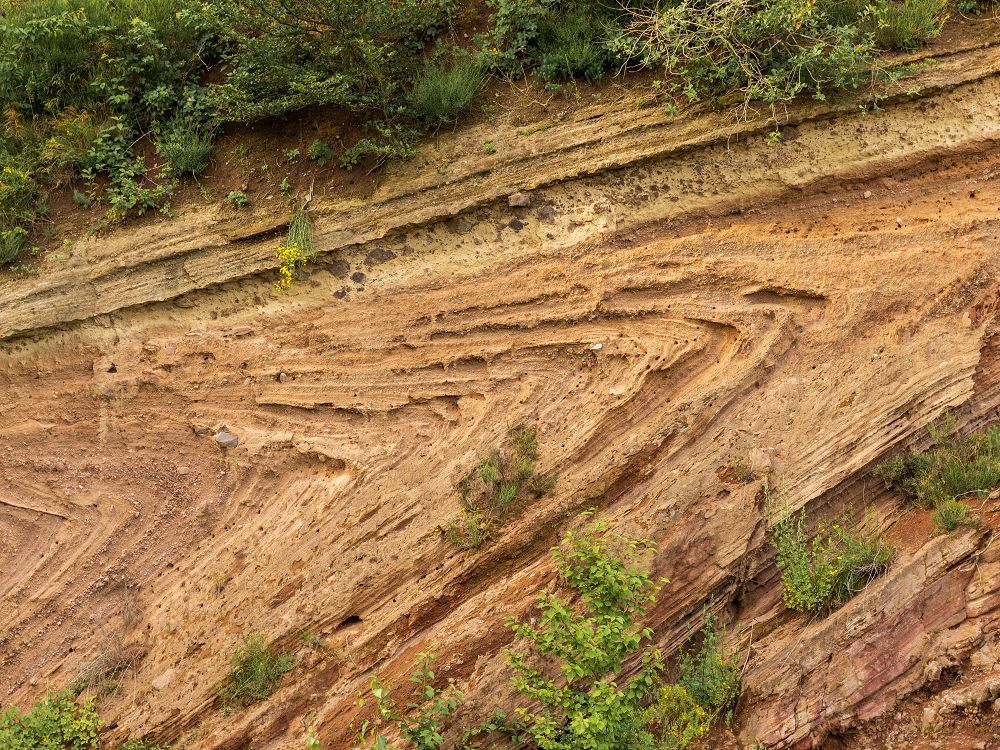



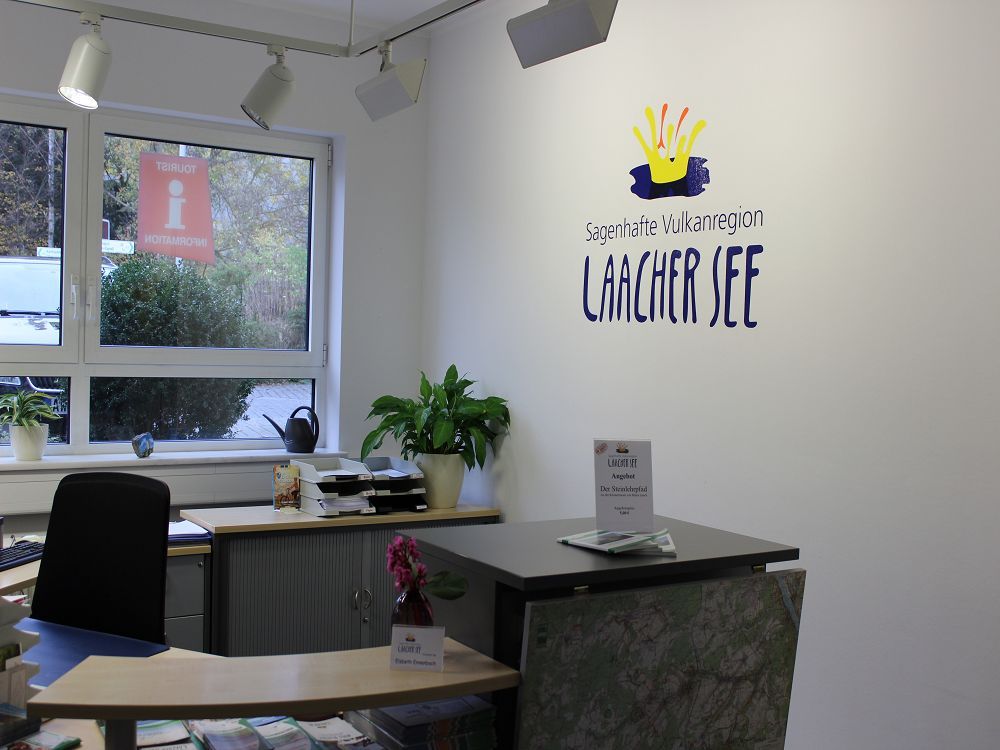

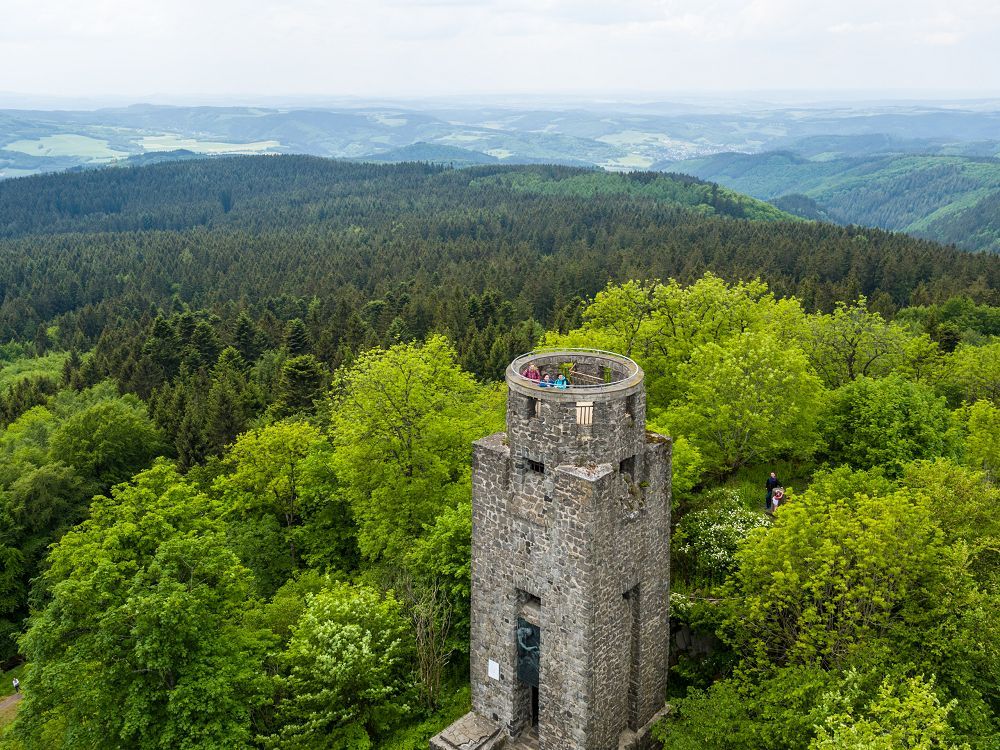

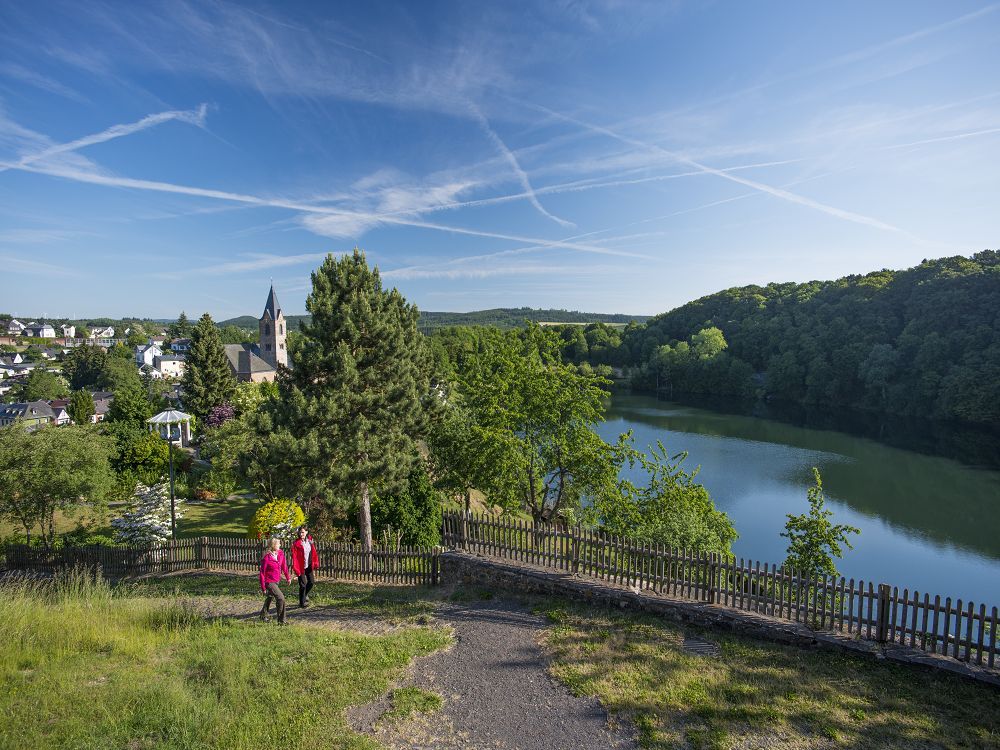
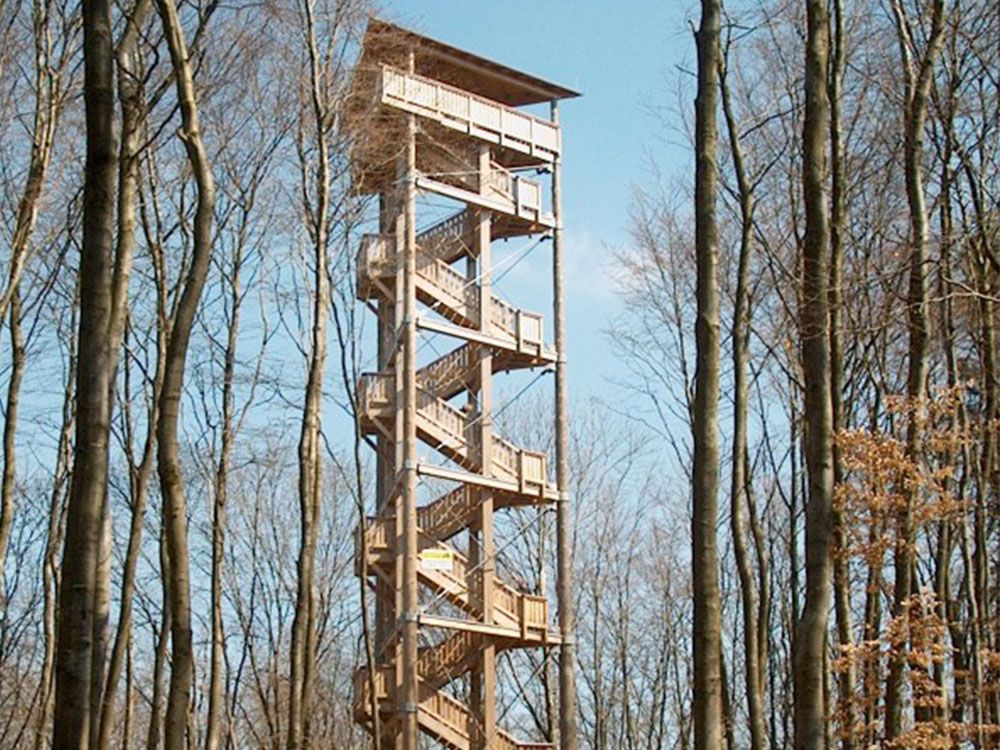

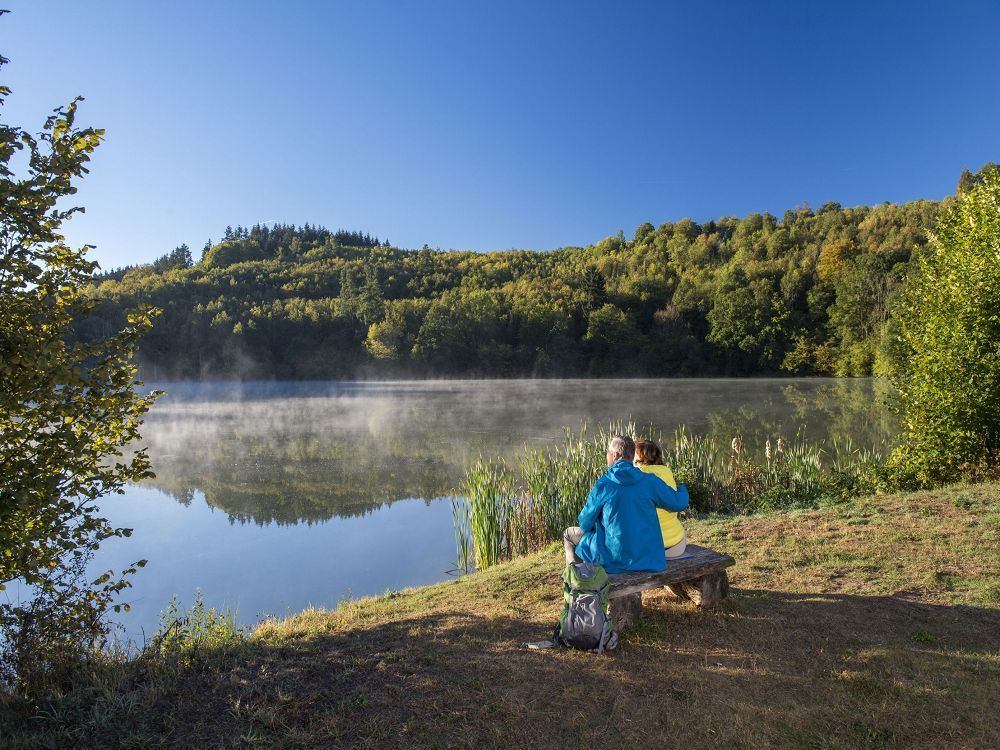
-df08adc9.jpeg)



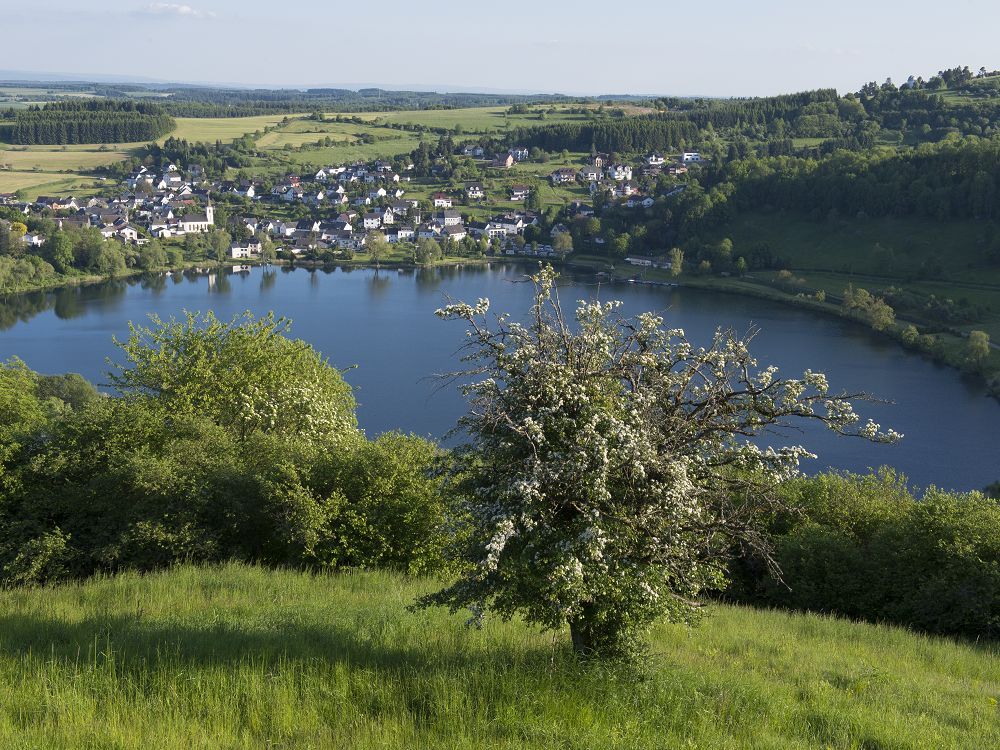
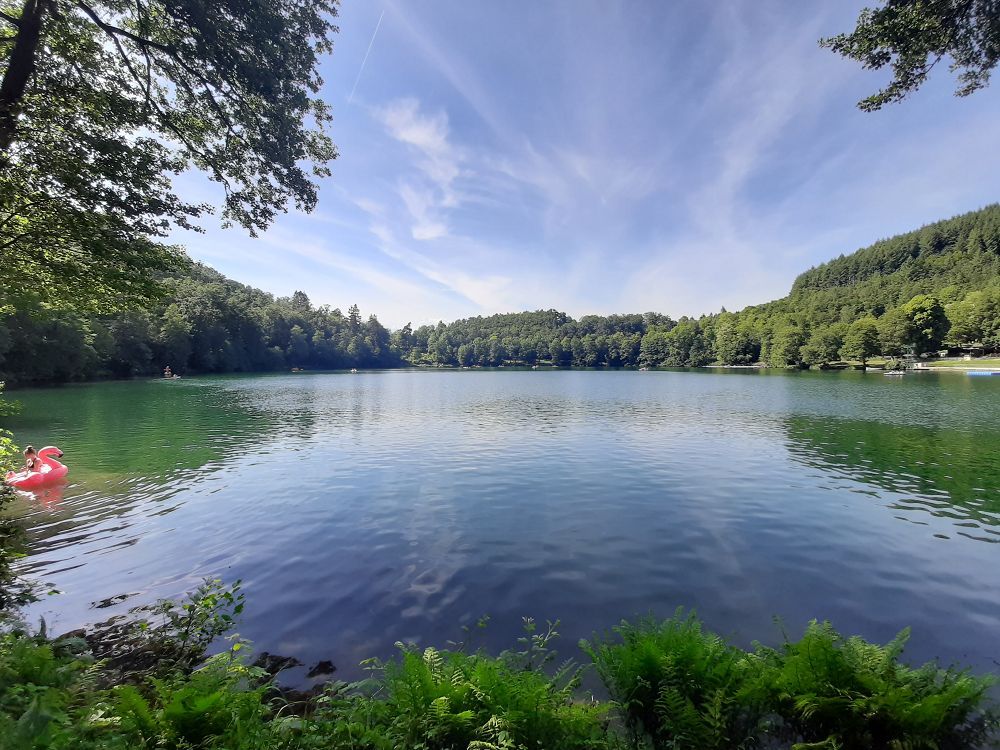
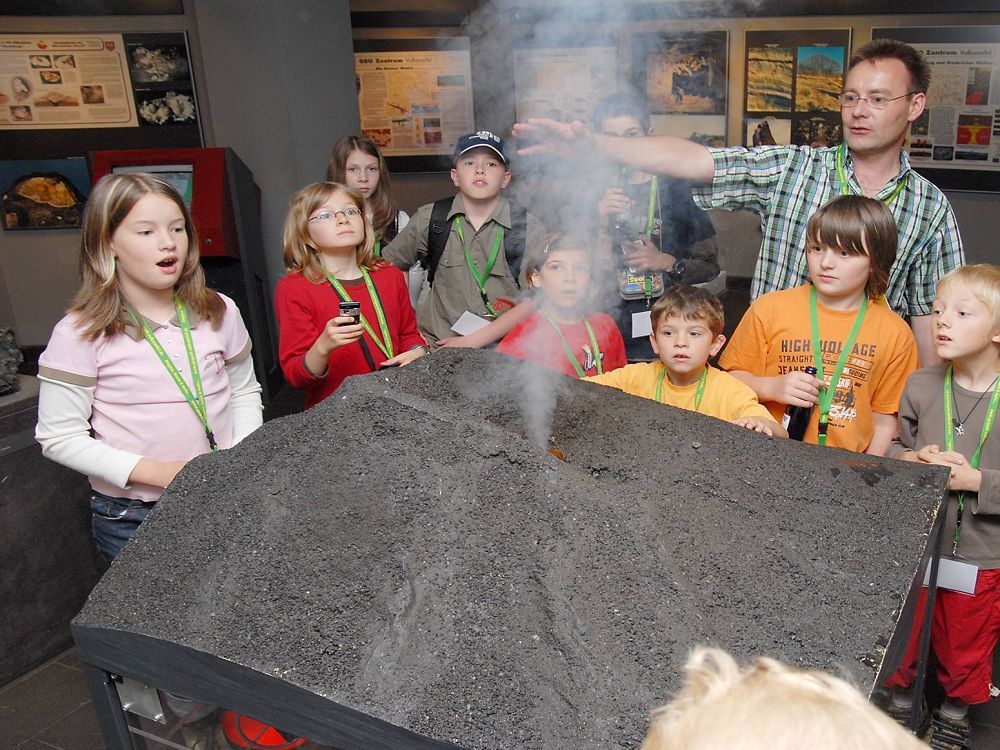
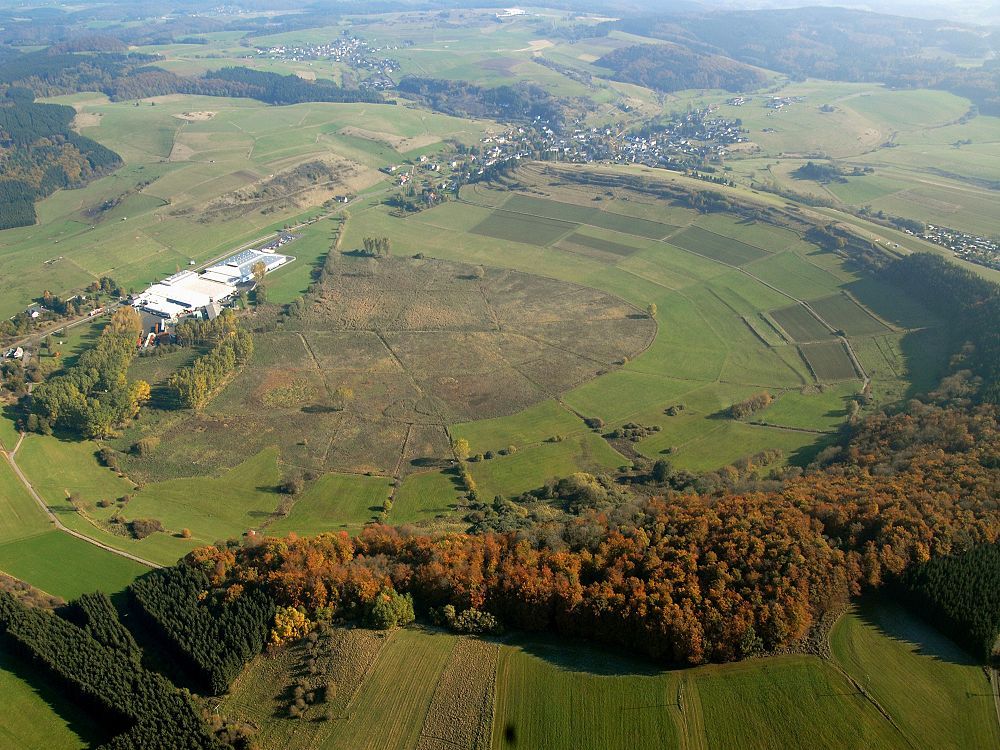
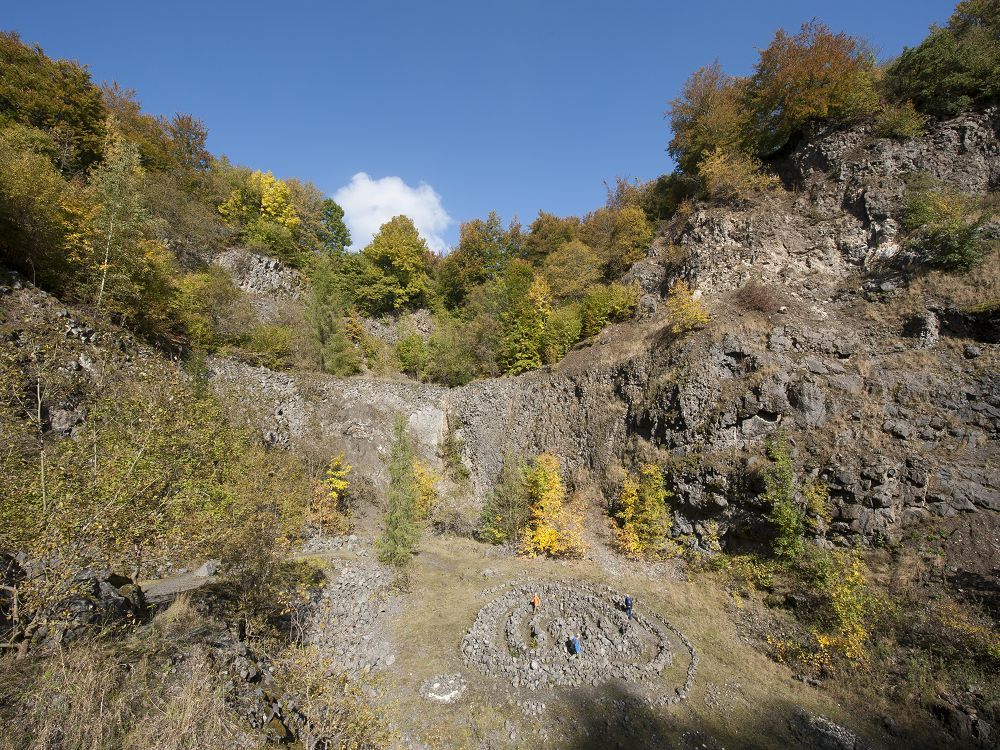
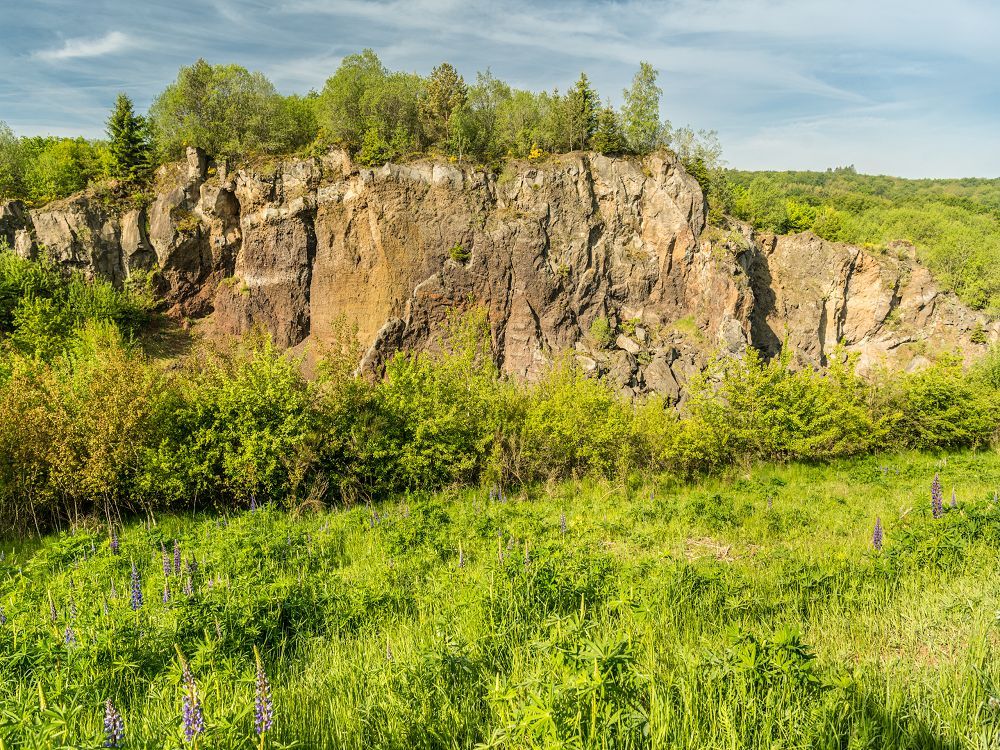
-a6d4c6f8.jpeg)
